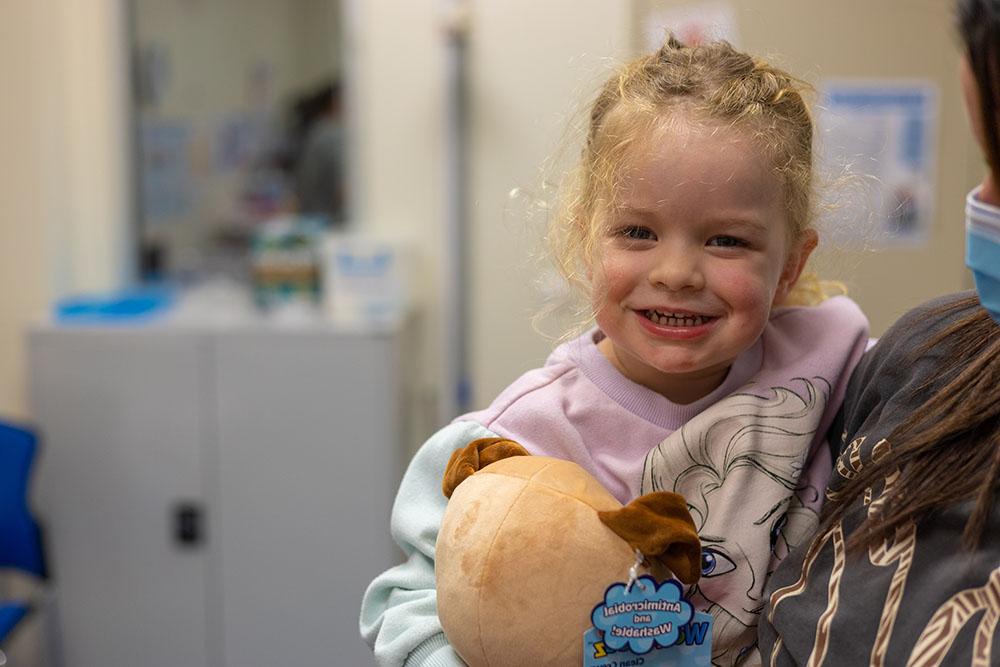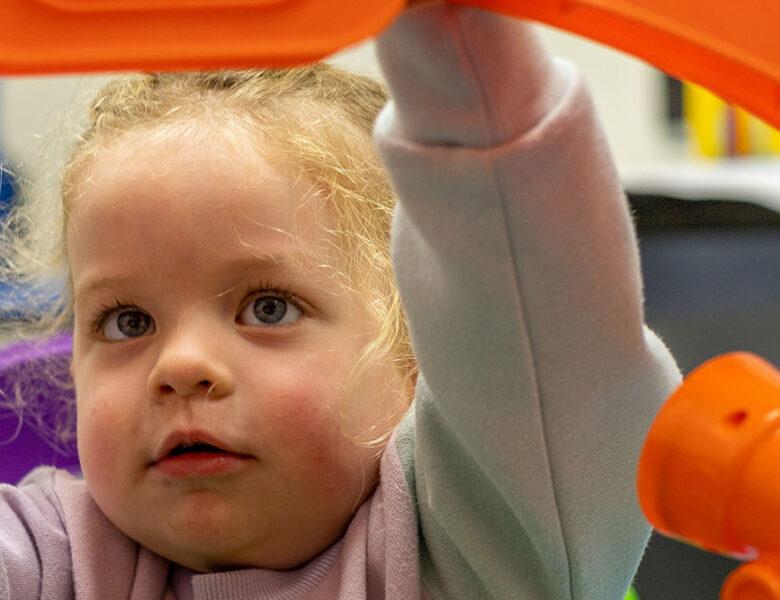New toys for Allied Health patients
Walking into her Speech Pathology appointment, 3-year-old Elysia was met with a room filled with brand-new toys. Speech Pathology Assistant, Karen Sowton, uses them as a way to act out scenarios, ask questions and create a sense of fun for Elysia during her therapy.
Many children just like Elysia who visit the Speech Pathology and Occupational Therapy departments at the Women’s and Children’s Hospital will have this same experience thanks to a huge refresh of toys for the Allied Health services.
The purchase of these toys was made possible thanks to the generous support of Cops for Kids – a dedicated group of current and former South Australia Police employees who raise money for children’s charities.

Elysia playing with the new toys in her Speech Pathology appointment.
Toy refresh
Karen explains, “Many of the items within the Occupational Therapy and Speech Pathology departments are used over and over again as they are considered to be a robust, engaging and therapeutic option for infants and young children.”
“Over the years, these have become unusable because they are missing pieces or have broken parts, and many also lose their relevance over time and need updating.”
“These toys will go a long way in welcoming and supporting consumers and families accessing Occupational Therapy and Speech Pathology.”
“They have already made a difference by sparking some familiarity and interest for both children and their carers because they are current, relevant, appealing and engaging.”

Elysia loved the new toys in the Allied Health department!
The benefit of toys in Allied Health
Karen says toys play a highly valuable part in Allied Health therapy services.
They are used as part of informal assessment kits, play-based therapy aids, distraction management and to assist with cooperation and engagement in tasks which may be daunting and difficult for young patients.
Karen says, “Toys create enjoyable interactions between staff and families during wait times, assessment and therapy sessions and procedures which can be scary, uncomfortable and even painful.”
“They aid in establishing, consolidating and extending therapy goals such as turn-taking, choice-making, sharing, listening skills, following instructions, hand-eye coordination, role play, targeted early communication and fine motor therapy goals (e.g. sounds, words, grammar, language phrases, reaching, manipulating, coordination and construction).”
“Toys also create a pleasant and welcoming environment when children come into the Hospital for their therapy which can significantly reduce the stress and anxiety of patients and their carers and shows a pathway to how therapy goals can be built on within their own home.”
Back to all news


